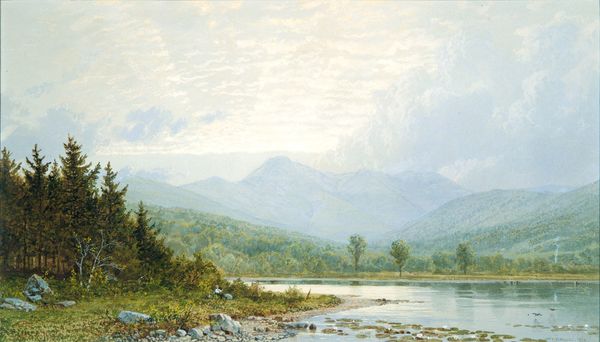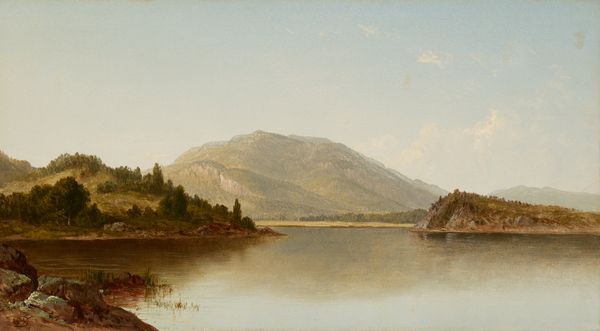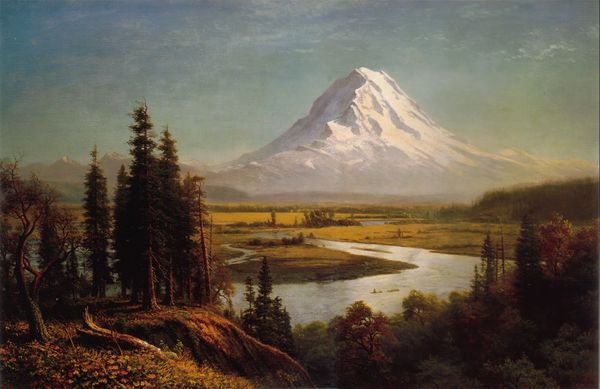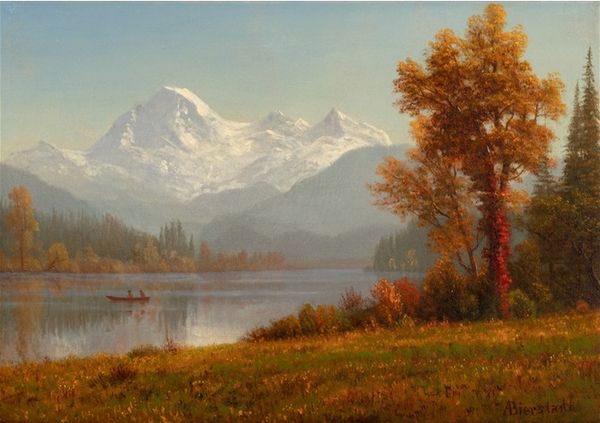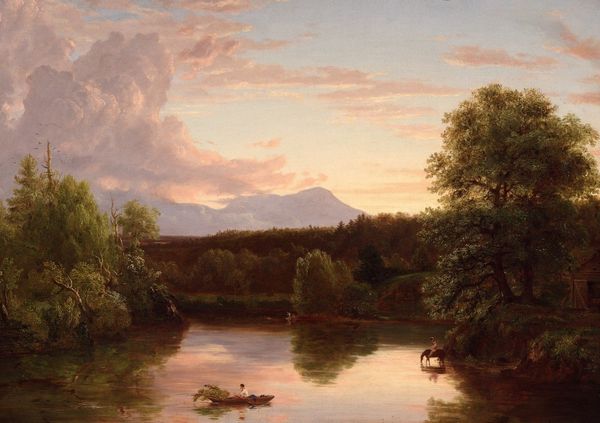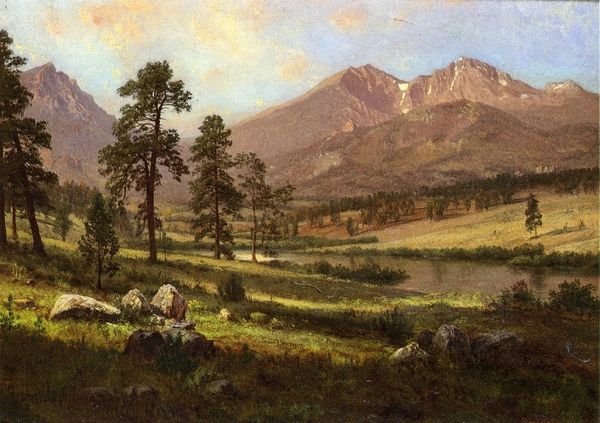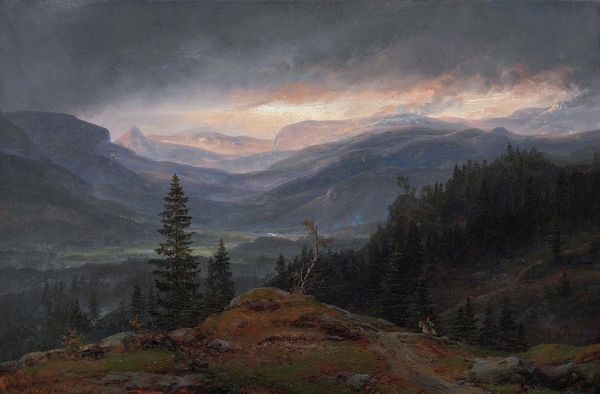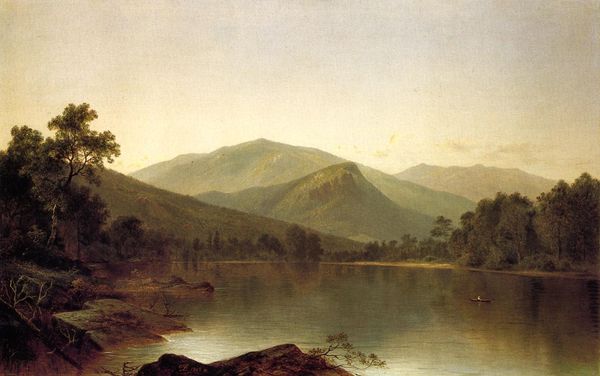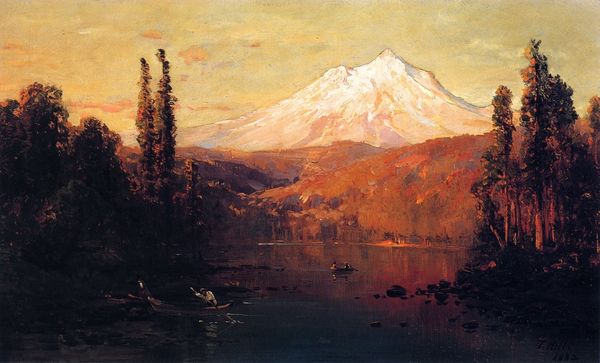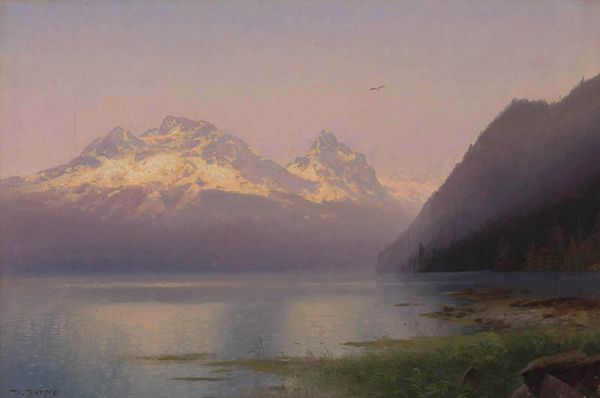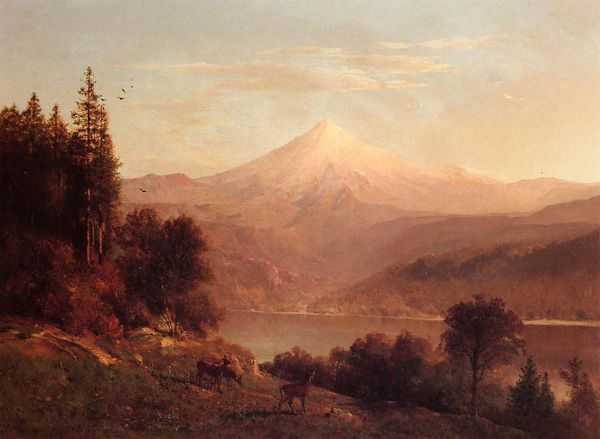
#
countryside
#
impressionist painting style
#
landscape
#
impressionist landscape
#
possibly oil pastel
#
nature
#
oil painting
#
naturalistic tone
#
nature heavy
#
painting painterly
#
watercolor
Copyright: Public Domain: Artvee
Curator: We're looking at Albert Bierstadt’s "Laramie Peak," painted around 1870. This work captures a vast landscape in the American West. What strikes you first? Editor: It's serene, almost idealized. The muted palette—those browns and soft greens—gives it a sense of tranquility. The lone boat adds a melancholic feel to such an expansive scene, but the mountain at the backdrop inspires an equal amount of reverence, the kind of painting I can almost breathe in. Curator: Bierstadt, during this period, was very invested in visualizing the American West for Eastern audiences and Europeans. This work is a part of that narrative: how was the landscape being understood, consumed, and perhaps, even, commodified? The sublime nature shown in combination with the daintiness of human creation such as a small boat, which could speak to that dichotomy. Editor: Exactly, it's not just about showing a pretty view, it’s about ownership, too, and defining national identity at a pivotal moment in American history. Consider how these romantic portrayals gloss over the brutal realities of westward expansion for indigenous people. Bierstadt got a huge sum for work like this which afforded him the access for creating more and becoming increasingly relevant as he showed these artworks across nations. Curator: Right. These grand landscape paintings fueled the idea of manifest destiny. And, aesthetically, we see the influence of luminism in the way Bierstadt manipulates light, creating an almost theatrical scene. Note the stillness in the lake’s surface; it nearly mirrors the mountain above. Editor: Yes, and it’s important to think about whose gaze is being centered here, it becomes less of an "artwork" as it starts embodying political power that demands examination and reevaluation under present intersectional values. He wants us to perceive a limitless space ready for our occupation, no consideration to any original occupants of that land, such as the indigenous peoples and wildlife whose homes we now take ownership of. Curator: Precisely, unpacking this artistic rhetoric is as crucial as admiring his painterly skills. Bierstadt prompts us to be mindful about whose stories get told. Editor: These landscapes encourage us to challenge those historical frameworks and imagine more inclusive representations of nature.
